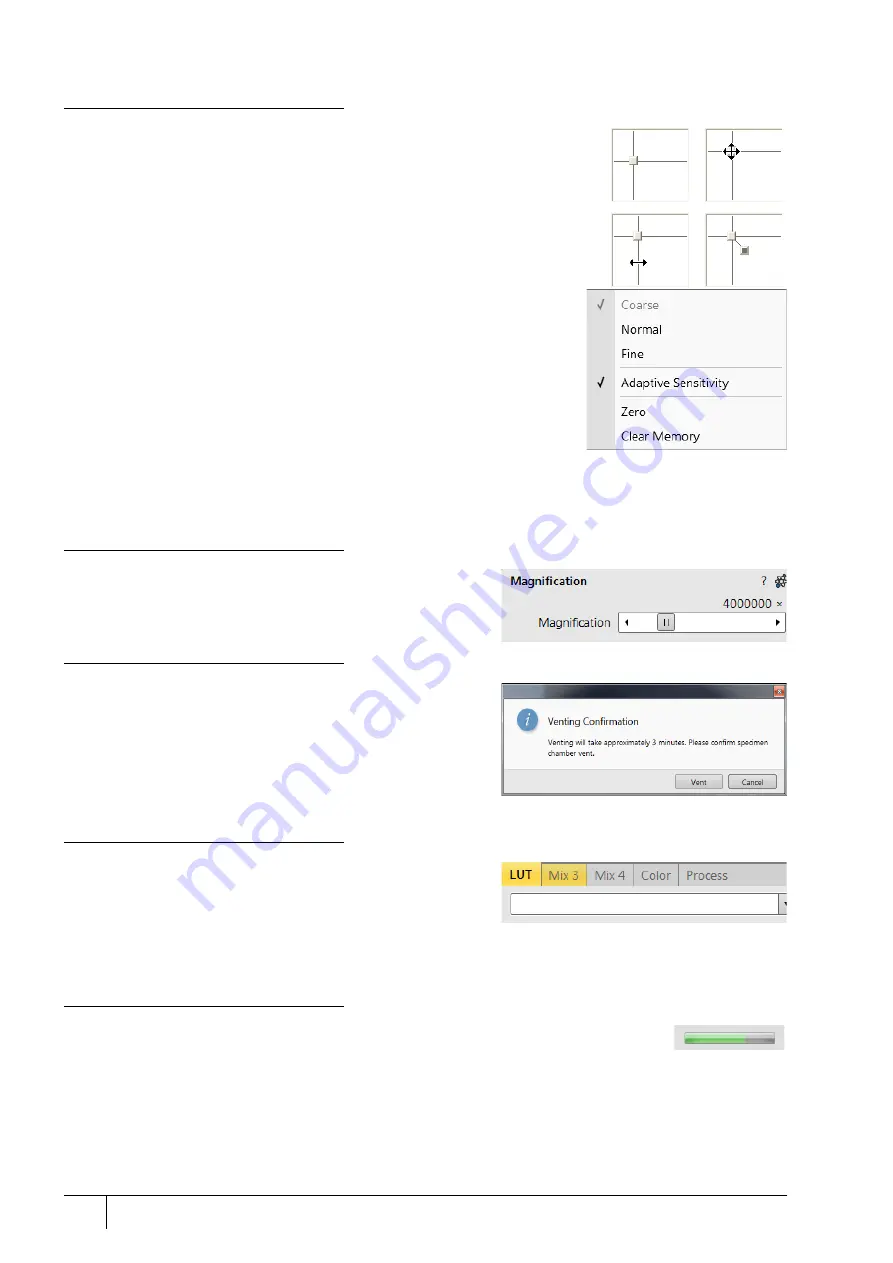
Software control: Software interface elements
3-4
User Manual
C O N F I D E N T I A L –
limited rights
Feb 2018
Revision A
2D controls
This control method is represented by an X-Y box. The position of the crosshair
corresponds to the actual parameter value; its full range is represented by the
perimeter of the box.
Clicking on & dragging anywhere inside the box changes the active cursor to the
4-ended arrow and positions it at the screen point corresponding to the actual
control value (minimum in the middle of the screen and maximum at the edges). It
can be dragged in four directions. Clicking on & dragging directly on the X / Y axis
changes the active display cursor to the 2-ended arrow, which can be dragged only
in the corresponding direction. To apply the value(s), release the mouse button.
Right-clicking on the 2D box opens a context menu with choices:
•
Coarse
/
Normal
/
Fine
item – sets the mouse sensitivity necessary for the full
range from a long to a short mouse path.
•
Adaptive Sensitivity
item – adjusts the mouse control response to be the
same at any magnification.
•
Zero
item –brings the control value to zero and the cursor to the center of the
box.
•
Clear Memory
item – clears condition values, that have been remembered
automatically during the relevant 2D control use. These remembered values
are used to estimate new values, that have not yet been remembered.
The menu may contain fewer functions or some other functions that are available for that particular parameter.
Selecting the corresponding menu item activates the function.
Modules
Modules visually combine various software elements, that are
related into a labeled group. Complex software elements such as
Control pages or dialogs are typically composed of modules.
Dialogs
A dialog appears when the system needs more information from
you before it can carry out a command, or when the system
wants to give you some important information. Some dialogs do
not let you access other functions until you close them. Others let
you perform other tasks while they remain on-screen and running
(for example, the Preferences dialog can remain opened while
performing other tasks).
Tabs
In modules or dialogs containing more interface elements than
would fit into the limited area,
Tabs
are used. These related
elements are split into groups (sections), and each one is
represented by a labeled Tab. Clicking on the Tab brings it to the
foreground showing the corresponding group of interface
elements. Tabs where some parameters were changed are highlighted (orange background).
Progress bars
The progress of long, ongoing procedures is indicated in dedicated dialogs or modules.






























